Introduction
SWOT Analysis helps the organization, business units, and project teams identify specific Strengths, Weaknesses, Opportunities, and Threats related to the enterprise business model and strategies, business processes, and supporting internal and external environments. SWOT goals specifically identify the business venture or initiative’s objectives and the internal and external favorable and unfavorable factors to achieving the supporting plans.
The SWOT is an effective method to maximize opportunities while minimizing adverse conditions associated with given initiatives or objectives. SWOT provides an environment to evaluate the business unbiasedly – the key to avoiding unnecessary problems and risks that typically impact success resulting from corporate ‘sacred cows’ and internal political and cultural considerations.
SWOT is an acronym for the four parameters the technique examines shown below.

The SWOT Analysis enables an organization of any size from startup to multinational to effectively:
- Identify and explore potential changes to the organizational strategies, structure, and processes to eliminate problems and threats and exploit and leverage strengths and opportunities.
- Determine change priorities.
- Ensure strategic alignment throughout the business.
- Adjust and refine current plans mid-course, as required.
- Develop new business models and policies to support identified changes.
The techniques used to conduct SWOT Analyses are akin to ‘peeling back the onion.’ Asking questions is the obvious way to obtain the required information; however, why stop at only one question or be satisfied with the response. By asking more profound and more in-depth questions that build on the previous answers, you are more likely to be ‘peeling back the onion’ and discovering and articulating more focused information and knowledge.
“An increased shift toward organizing for the future. Who are we? How do we operate? How do we grow? These are three pressing questions leaders are asking as they prepare their organizations for the first true information revolution. The winners of this paradigm shift will be distinguished by their flexible operating models based around networks of teams, unprecedented industry collaboration, and more human companies defined by purpose.”
McKinsey
A SWOT Analysis supports brainstorming workshops and planning sessions for:
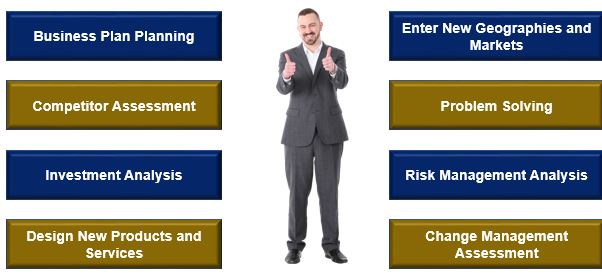
“In business, what’s dangerous is not to evolve.”
Jeff Bezos
SWOT: Internal and External Dimensions
SWOT Analyses focus on the internal and external dimensions, as described below.
Internal Dimensions
Internal dimensions represent the business’s strengths and weaknesses. Strengths are the characteristics that provide the company’s competitive advantage, while weaknesses are behaviors that a company needs to overcome for success and sustainability.
External Dimensions
External factors represent the company’s market opportunities and threats to the company. Opportunities are items identified in the external environment with the potential to generate value. Threats are elements that prevent the company from attaining its full potential with goals and strategies achievement.
“Focus on building the best possible business. If you are great, people will notice and opportunities will appear.”
Mark Cuban
SWOT Analysis Origin
Albert Humphrey created the SWOT design by tested the technique in the 1960s at the Stanford Research Institute – now, SRI International. Developed for business and referencing Fortune 500 companies’ data, his SWOT Analysis has been recognized and adopted as a practical analysis component by private and public-sector organizations of all types to generate conclusions and decision-making. Previously, corporate planning had not met with much success as business managers needed a way to produce long-term planning that was executable and reasonable.
SWOT Analysis Considerations
Outlined below are examples of the SWOT elements included in a broad selection of business organizations.
Strengths represent internal attributes and resources that support competitive advantage and a successful business outcome.
Strengths can be physical assets, such as human resources, technology, business location, or characteristic of the materials used. They can also be intangible, for example, the corporate brand, reputation, and customer loyalty.
What does the organization do better than the competition that generates value?
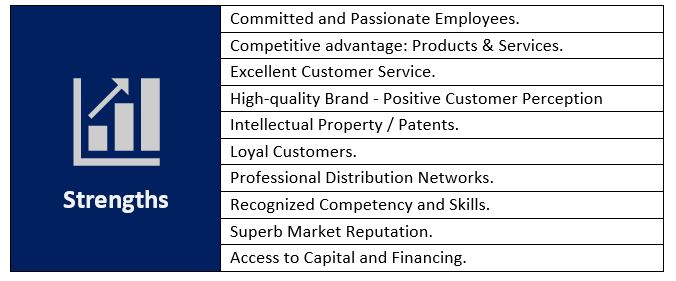
Weaknesses represent internal attributes and resources that are obstacles to successful outcomes and priority candidates for change and improvement.
All organizations have weaknesses, things that they do not do so well. Weaknesses are problematic if they prevent the business from achieving its goals or adding complexity or roadblocks to success.
What internal weaknesses hinder the organization’s plan for market success?
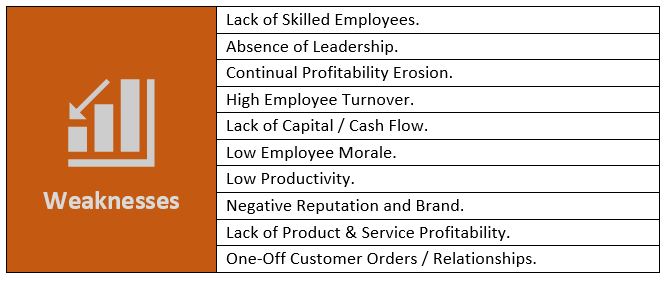
Opportunities represent trends or other changes in the marketplace that can become opportunities for the organization to capitalize on or use to its advantage.
Opportunities can impact the business from modest to game-changers by quickly recognizing and exploiting particular high-value external market developments.
What market trends and developments support new target markets entry, product value enrichment, customer service, and loyalty improvement?
Threats represent external risks and other factors beyond the organization’s control that could jeopardize the business’s success and sustainability.
Changes in the economy, domestic and global crisis (COVID-19), trends, and technological development can affect an organization’s target markets and strategic initiatives.
What market and regulatory conditions with potential organizational impact require mitigation strategies?
“It’s fine to celebrate success but it is more important to heed the lessons of failure.”
Bill Gates
Conducting SWOT Analysis
A SWOT Analysis is used to help an entity — whether it is an organization, team, or an individual obtain insight and appreciation into the current and future position in the marketplace or against a stated objective.
The SWOT Analysis concept believes that since the stakeholders can identify and assess competitive advantages and positive prospects and existing and potential problems, they can improve decision-making and develop better go-forward plans.
Experience supports that the graphic below highlights important considerations for conducting a SWOT Analysis.
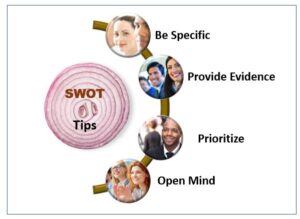
Outlined below are well-recognized steps in conducting a SWOT Analysis.
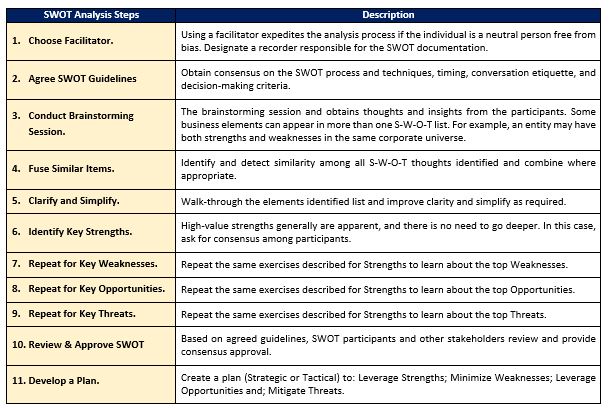
“Strategic planning is the continuous process of making present entrepreneurial (risk-taking) decisions systematically and with the greatest knowledge of their futurity; organizing systematically the efforts needed to carry out these decisions; and measuring the results of these decisions against the expectations through organized, systematic feedback.”
Peter Drucker
SWOT Common Pitfalls
SWOT is a technique that requires participants to have appropriate training in business analysis supported with excellent soft skills along with a practical understanding of the marketplace and economy, enterprise business model, strategies, current, and future positive and negative challenges, and cultural behaviors.
Even with covering the bases with the above prerequisites, there is a potential for problems impacting successful SWOT outcomes. As with any group planning and brainstorming events, there is an assortment of unpredictable and disconcerting situations that may arise with group discussion and consensus.
Examples of common SWOT pitfalls encompass:
- Getting bogged down, by collecting extensive data and statistics without appropriately analyzing and understanding the findings;
- Jumping to conclusions about the future based on the past or present situations;
- Overestimating strengths and brushing over weaknesses;
- Confusing the internal and external environments;
- Focusing only on examination and decision-making on external conditions;
- Lacking a ‘sense of urgency’ and know how to convert strengths and weaknesses into opportunities;
- Placing an unbalanced priority on the short versus long-term;
- Believing that the SWOT can identify a Silver Bullet;
- Avoiding cross-division and business unit governance problems and resolutions;
- Considering the SWOT as a checklist versus Plan of Action;
- Underestimating the use of a formal ‘Change Management’ program to support organizational improvement plans;
- Lacking decision-makers ‘Walking the Talk’ with proactive implementation commitment.
“Yesterday’s home runs don’t win today’s games.”
Babe Ruth
PEST Definition & SWOT Differences
PEST is an acronym for Political, Economic, Social, and Technological factors. A PEST analysis is a valuable technique to employ when researching an organization’s strategic positioning and new business initiatives alongside the SWOT Analysis.
The critical areas of a PEST external market analysis include:
- Political: Laws, global issues, legislation, and regulations that may affect your business either immediately or in the future.
- Economic: Taxes, interest rates, inflation, securities markets, and consumer confidence.
- Social: Lifestyle changes and buying trends, media, major events, ethics, advertising, and publicity factors.
- Technological: Innovations, access to technology, licensing and patents, manufacturing, R&D funding, and global communications.
PEST can also be known as PESTLE, which includes additional factors below:
- Legal: Although these factors may overlap with the Political, they include more specific laws such as discrimination laws, antitrust laws, employment laws, consumer protection laws, copyright and patent laws, and health and safety laws.
- Environmental: These factors include ecological and environmental areas such as weather, climate, environmental offsets, and climate change, which may affect industries such as tourism, farming, agriculture, and insurance.
SWOT and PEST’s significant difference is that SWOT is used to evaluate both internal and external factors. In contrast, the PEST focuses solely on the organization’s external macro-environment that potentially affects the business’s position, the trends behind market growth or decline, and the identification of new directions for the business to explore.
“Business opportunities are like buses, there’s always another one coming.”
Richard Branson
The Way Forward
At Knowledge Compass, we bring together nearly four decades of thought leadership in business and technology strategy, the latest tools and best practices, and a seasoned consultant team with the competencies and talent to help our clients improve productivity and profitability.
Knowledge Compass explores and develops valuable new insights from business, technology, and science by embracing the powerful technology of ideas and brainstorming. Our consultants engage customers in challenging discussion and experimentation to expand business science boundaries and practice and translate creative ideas into practical solutions from within and beyond business.
Working with Knowledge Compass means a collaborative approach to understanding your current business model, strategies, and critical business requirements and goals.
We enable organizations to transform and deliver improved value by ensuring employees adapt and make the most effective use of crisis management and change practices in culture, strategy, infrastructure, processing, and digital transformation. Our consultants have a deep understanding of the social and business factors that support a people-based culture aligned with the appropriate corporate strategy and goals.
Knowledge Compass provides consulting services using time-tested best practice frameworks, analysis tools, and interactions from their professional Consultant Toolbox.

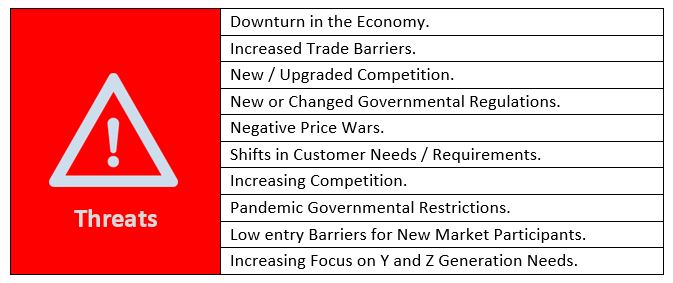



0 Comments